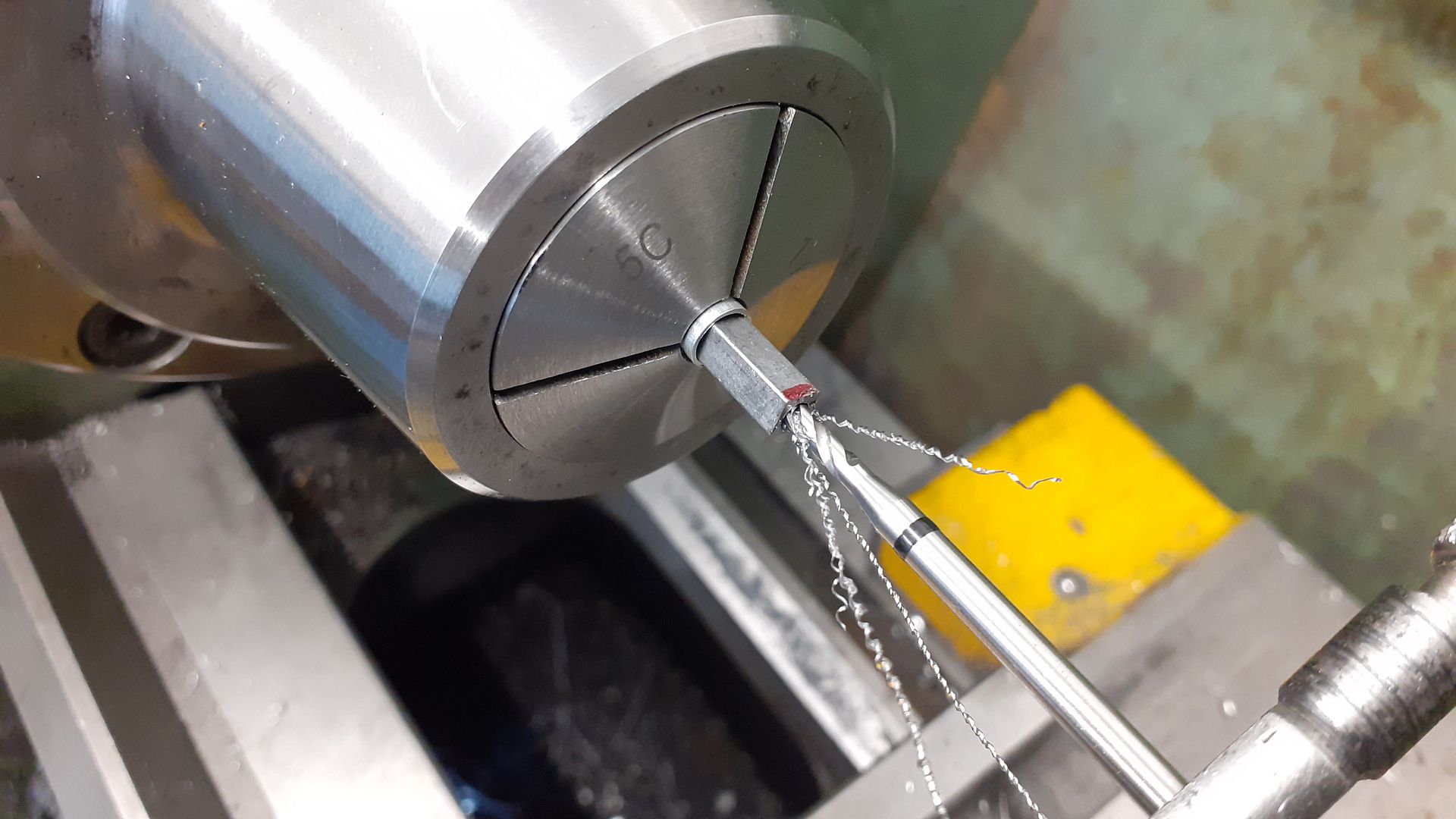I need to thread a 2/56 thread on a 1/8" square part. My chuck will not close tight enough. I do not have collets at this time.
I think I can accomplish this with a shop made fixture. Part is 1/8" square and 2-1/4" long. I will mill a slot 0.0620 deep and 0.125 wide in steel 1/4" x 1/2" and 5" long. Then cut this in half to about 2-1/2" long. The two halves close up tight on the part. If needed I can add a screw at each end to tighten the part. The jaws should tighten the part without any screws.
I would have tried this but just thought of it . The fixture will be 1/2" square and easily chucked in a 4 jaw.
I think I can accomplish this with a shop made fixture. Part is 1/8" square and 2-1/4" long. I will mill a slot 0.0620 deep and 0.125 wide in steel 1/4" x 1/2" and 5" long. Then cut this in half to about 2-1/2" long. The two halves close up tight on the part. If needed I can add a screw at each end to tighten the part. The jaws should tighten the part without any screws.
I would have tried this but just thought of it . The fixture will be 1/2" square and easily chucked in a 4 jaw.





